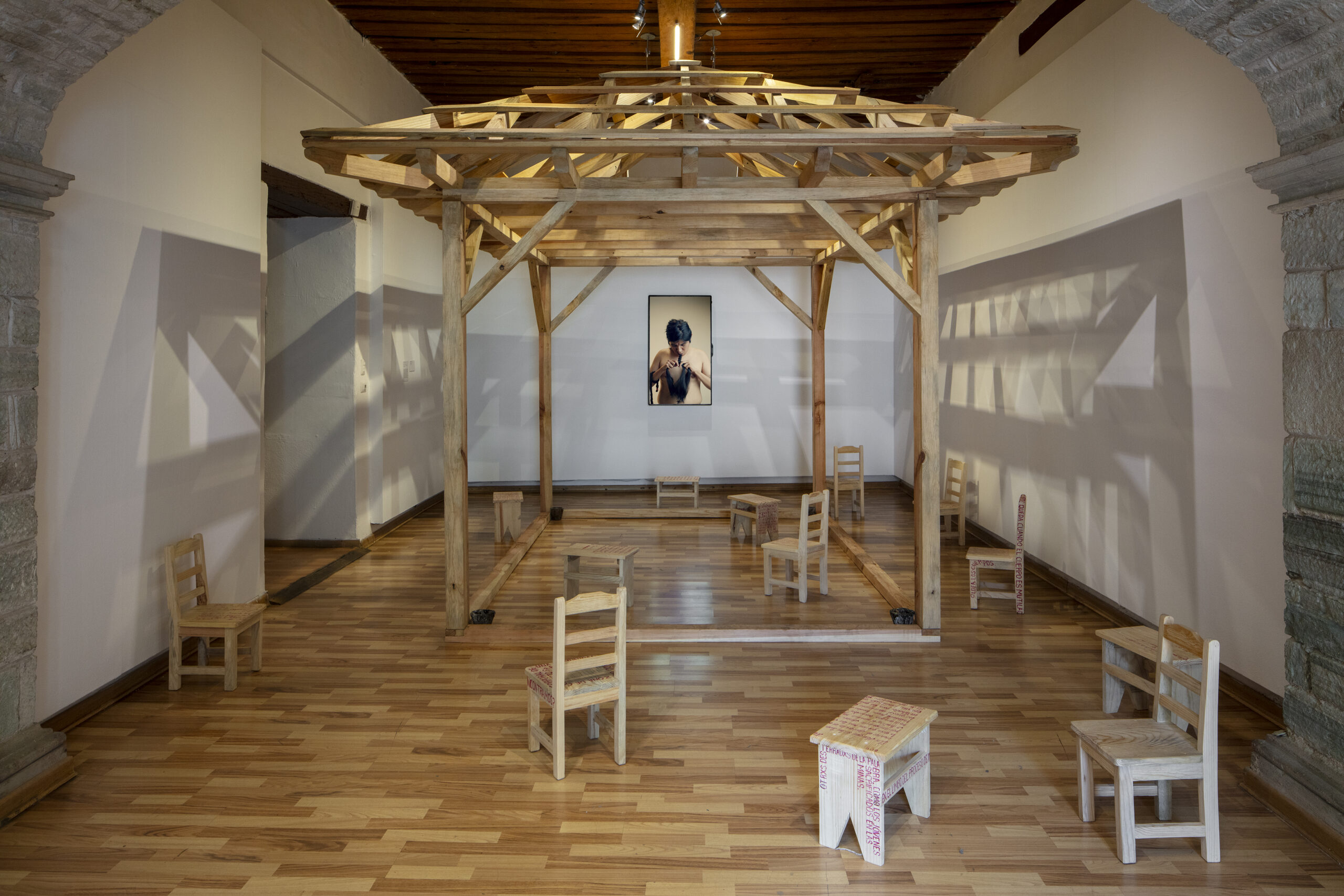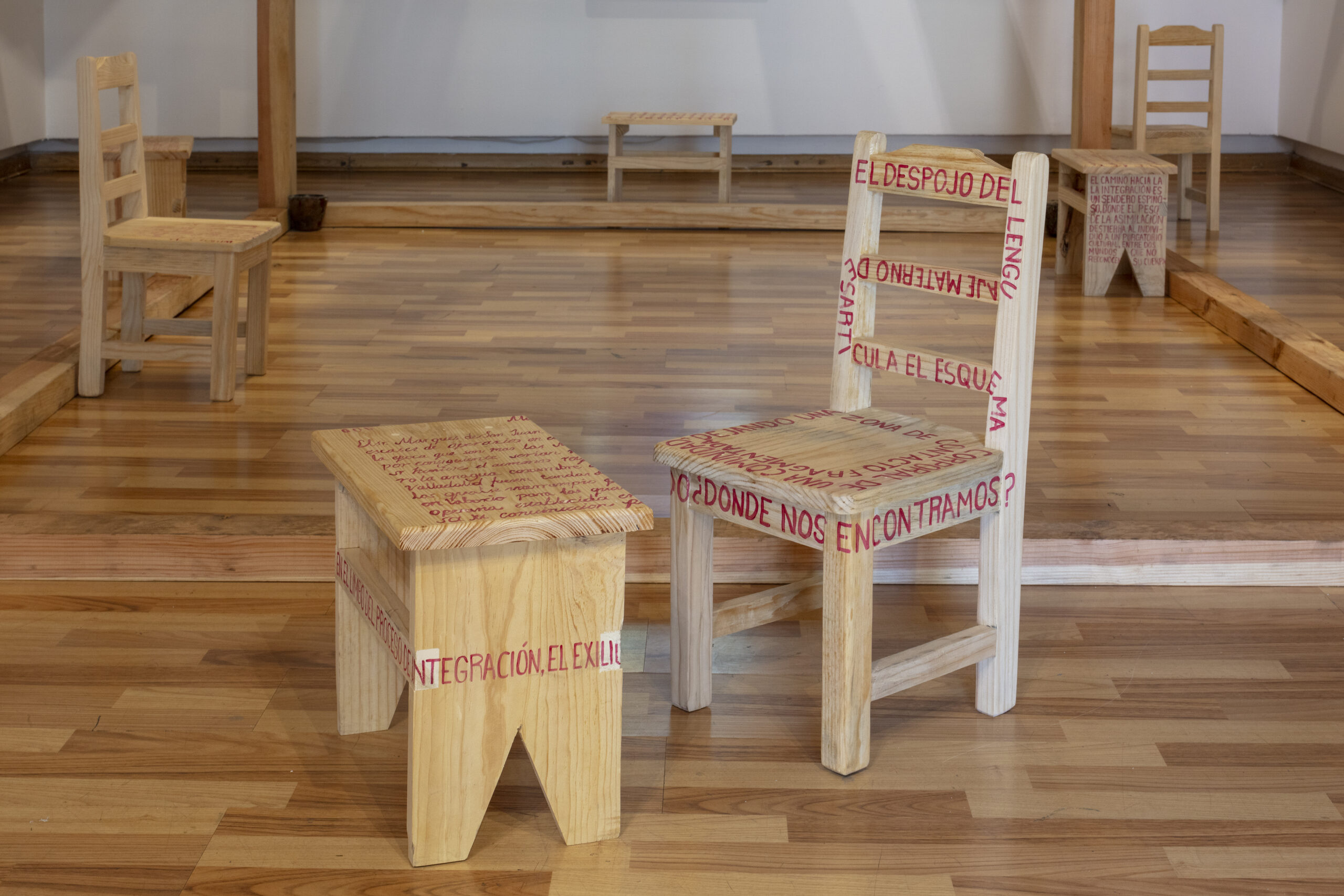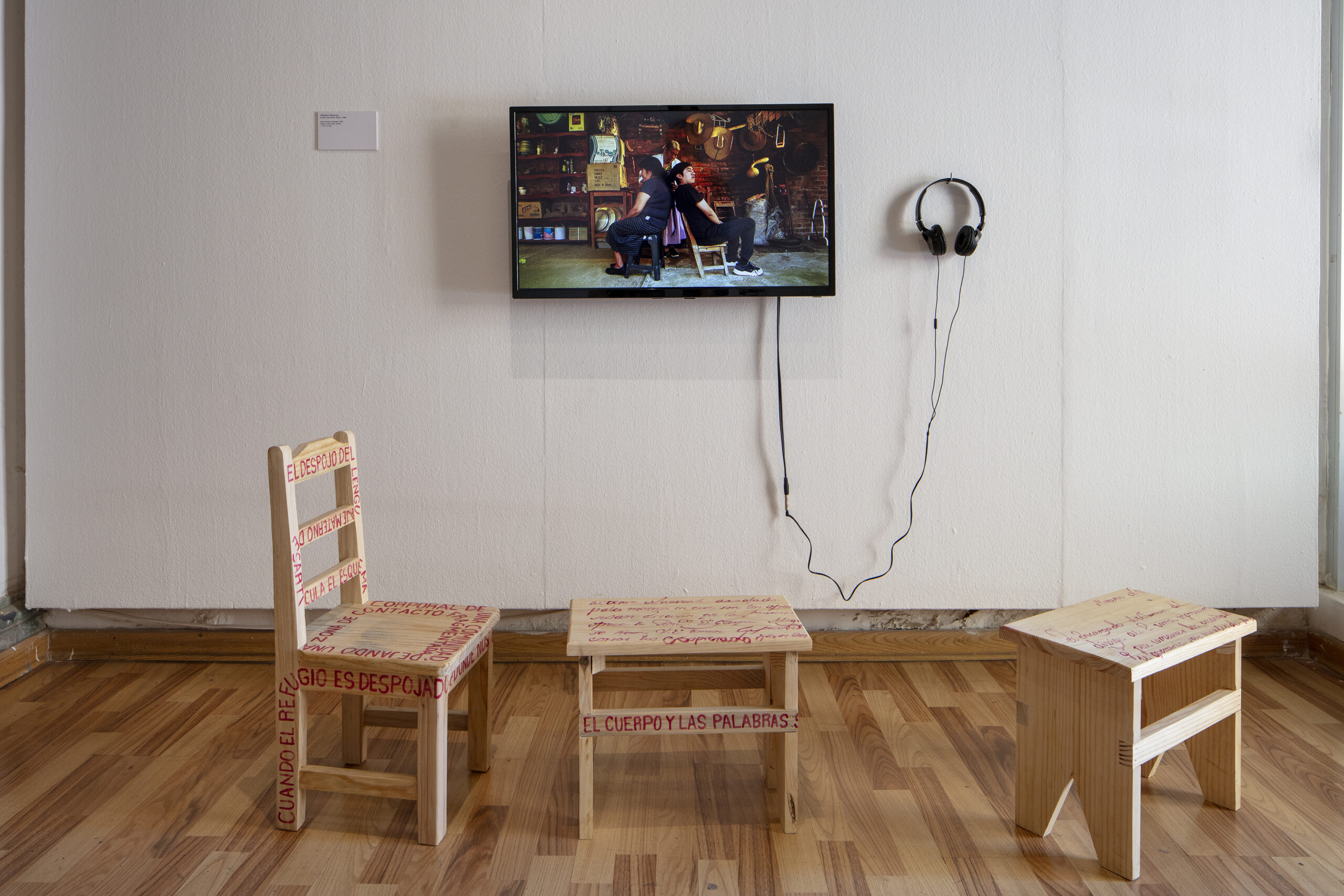Salvador Xharicata
(Cherán, Michoacán, México, 1996)
In work by Salvador Xharicata here is constant negotiation between the past, present and future, a strategy that questions his uprooting and ethnic-integration experiences. Themes like the history of the mestizaje race project, ethnic reinvention in Indigenous peoples in the first movements’ political processes, oral tradition in the P’uréchepa language, memory and maternal language as political potential all traverse his works’ reflections. In 2019, he joined the Taller de Escritura Etnográfica at the Escuela Nacional de Estudios Superiores, in Morelia, and is also a member of the Inconclusx study group, a contemporary art research program at Aparato de Arte in Guanajuato. Conocer el mundo con la boca sin que te piquen las espinas, at the Museo Casa Diego Rivera in Guanajuato, in 2023; Verano del Amor at Galería Campeche in Mexico City, 2023; Caminamos sobre la misma pira at Espacio Cabeza in Guadalajara, 2023 and Arte de los pueblos de México. Disrupciones Indígenas in 2022 at Mexico City’s Museo Palacio de Bellas Artes figured among the artist’s most notable recent collective exhibitions. He was a Programa de Estímulo a la Creación y Desarrollo Artístico grant recipient in 2023 and won the acquisition prize at the XLI Encuentro Nacional de Arte Joven in 2021.
Re-fugio – Re- incorporar – Refugio, 2023
Video (color, sound)
7 min. 05 seconds.
La lengua que trenza, 2023
Video (color, sound)
7 min. 51 seg
Hacer trenzas corporales, 2023
Video (color, sound)
11 min. 51 seg.
Nínt’ani. Volver a casa, 2024
Pinewood, acrylic paint, and quadraphonic sound
Video recording and editing: Julio César Galeote Pineda and Óscar Galeote Pineda
Carpenter: Michael Gembe
Nínt’ani. Volver a casa is an installation representing a “troje,” the traditional wooden housing of the people of the P’urhépecha plateau. The structure is accompanied by benches and chairs bearing transcriptions of text from a 19th-century document by the second Marquis of Rayas showing the shifts of indigenous people working in Guanajuato’s mines. The work also includes earlier audiovisual pieces that record the act of braiding hair; some feature the artist’s grandmother and mother. To a certain extent, Salvador Xharicata’s work addresses corporeality—that is, how we inhabit identity in our bodies. Language is a space in which the body and identity are closely intertwined; language is something to be inhabited. Originally from a P’urhépecha community, but belonging to a generation that no longer speaks the indigenous language, Xharicata reflects on how identity and language are related to the spaces that bodies inhabit. Xharicata links this notion to the history of enslaved P’urhépecha people exploited in mines in this exhibition, which is installed in a museum that was once the family home of the Marquises of San Juan de Rayas.
bienal



